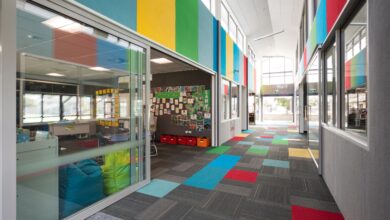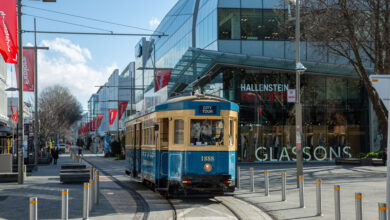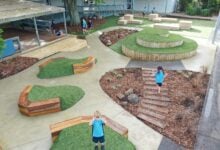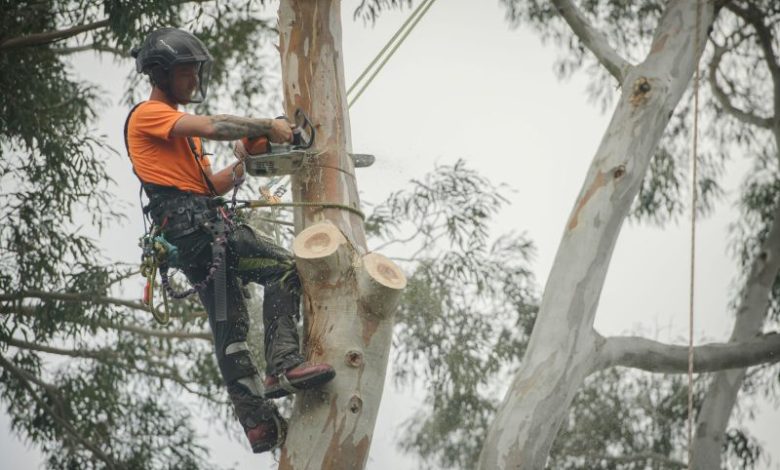
Trees help your school grounds to look good, provide shade for staff and students, become part of student play, and can be used as an educational tool.
Neglected trees, though, can pose a hazard. Rotting and unstable limbs are at risk of falling, potentially injuring people below. Dead trees are unsightly, and could fall over, which may have disastrous consequences for property, people and your school landscape.
Read the latest print edition of School News HERE
To prevent tree-related mayhem, proper tree maintenance should be a regular feature of all school’s property and facilities management plans.
Engage the experts
Health and safety should always be a priority for schools. It is important, then, to consider whether tree maintenance is something which can be carried out by school staff or if a professional arborist should be engaged. Routine trimming and pruning to maintain hedges and small trees can usually be managed by school staff. For larger trees or more extensive clearing, it is best to call in the experts.
A qualified arborist can help your school decide how best to maintain your school’s trees. In some instances, cabling and bracing can be used to provide added structural support to branches. This should be installed by a qualified arborist and regularly inspected to ensure it remains effective.
For some trees, though, removal may be the safest, most cost-effective option. Again, this should be carried out by an arborist, who will be trained in the best way and correct equipment to use to remove the tree.
When scheduling large-scale operations, choose a time that won’t impact on staff and students. School holidays may be the optimal time, though urgent work necessary to keep your school safe must be carried out as soon as possible.
More than tree maintenance, an arborist can conduct an audit of all trees on your school grounds. Using specialist equipment, the arborist will gather information about all trees on your site and assess any risks. A written tree report can provide your school information about the species, size, age, and proximity to power lines and other infrastructure for all trees on site. In some cases, this information can be used in insurance claims, as an indicator of a tree’s health and proper maintenance.
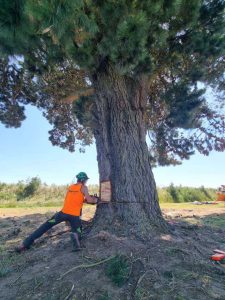
Regular maintenance
The Ministry of Education says that schools must maintain trees on their property so they do not become a hazard to students or staff. General maintenance work on trees such as trimming or removing dead branches, and the removal of protected trees should be paid for with your school’s Property Maintenance Grant.
Trees that become too big can pose a hazard in high winds and can block light. Large trees may also become a nuisance to neighbouring properties.
Schools should consider the type and size of trees planted near swimming pools. Branches or leaves falling into the pool can be time consuming to clean and may inhibit use of the pool.
Similarly, care should be taken around paths and playgrounds. Fallen leaves and branches can become a slip or trip hazard. Limiting leaf fall in these areas can help to mitigate this risk.
Some trees are protected and will require contacting your local council before trimming or removing them. This will include naturally established native trees, trees with historical, cultural or botanical value and trees protected on the certificate of title, which might need a resource consent to do anything to them.
The MOE advises that if a protected tree needs emergency work to deal with a hazard to people or buildings, such as a damaged branch that may fall, you can contact your local council for advice Although resource consent is probably not needed for routine maintenance, such as trimming or removing dead branches, it is best to check first.
Other activities around protected trees including excavating or digging, construction work, depositing material close to the tree, putting in pipes or power lines, and storing things under the tree may also require resource consent.
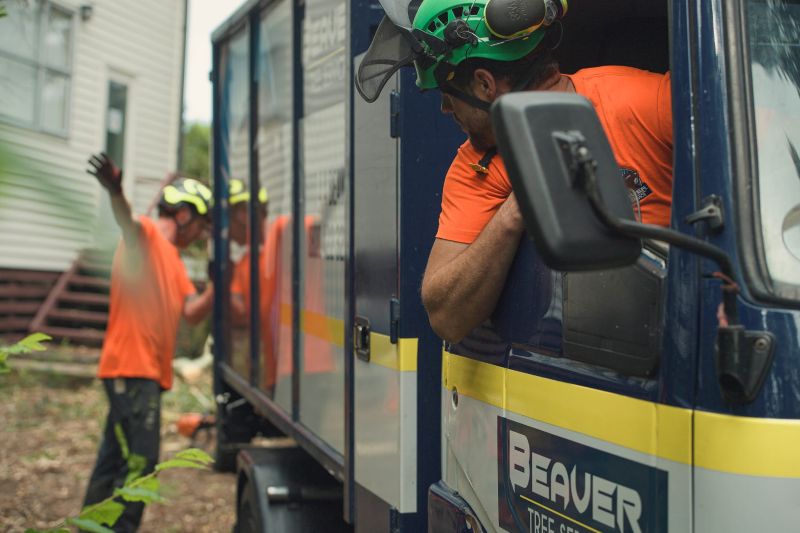
From an industry insider
Neglecting tree maintenance can lead to an array of issues. Bryce Robb from Beaver Tree Service said: “Unchecked trees may develop structural weaknesses, increasing the risk of falling branches or entire trees collapsing.
“Pests and diseases can thrive in unmaintained trees, potentially spreading to other trees and plants in the vicinity,” Mr Robb said. “Overgrown branches can obstruct pathways, buildings, and other facilities, and can clog gutters or drop leaves on pathways creating slipping issues. Visual tree inspection and scheduling of regular maintenance to all trees will reduce these risks and ensure a safe environment for everyone.”
Removing large trees often requires heavy equipment to ensure safety and efficiency. “In some circumstances, it can be a good idea to use cranes to safely remove large limbs, but arborists have the expertise to safely remove trees in all situations. If access will not allow for a crane to be used, trained teams can climb using ropes and harnesses to lower larger sections safely.”
Pruning is a key step in tree maintenance. Mr Robb said: “Pruning improves safety by reducing the risk of falling branches, removes dead and diseased limbs, and promotes better air circulation and growth. Maintaining greenery is also important for aesthetic appeal, as well-maintained trees and hedges create a more inviting environment.
“My suggestion would be to prune regularly as part of a maintenance programme for your trees and hedges, to control the size and shape of your trees and hedges and help prevent any interference with buildings and other facilities.”




